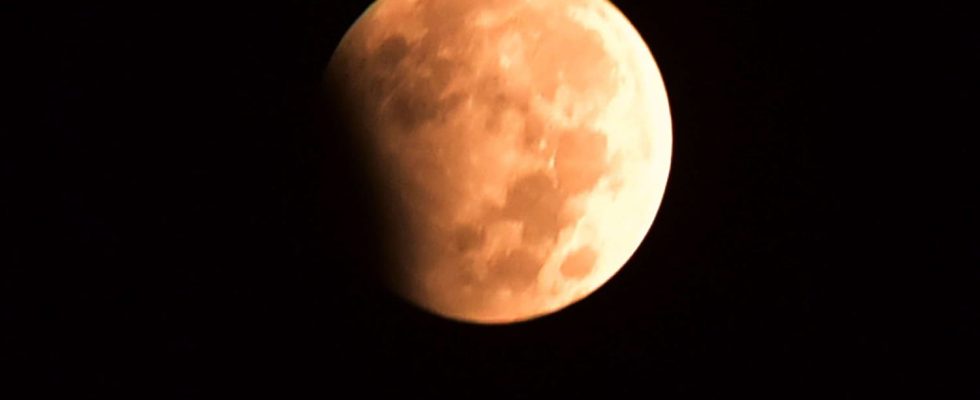A lunar eclipse, or lunar eclipse, is possible any time the Moon is in the Earth’s shadow. There are 2 or 3 per year. The next lunar eclipse will take place in March 2024…
This Saturday October 28, 2023 took place a partial lunar eclipse, a pretty spectacle in the sky. Some were lucky enough to be able to observe it from France in the evening (from Paris for example but also elsewhere in France). For others, here is a photo of the last lunar eclipse.
What is a lunar eclipse?
A lunar eclipse occurs when the Moon passes into the Earth’s shadowthe latter then interposing between the Sun and the Moon, blocking all or part of the solar radiation which illuminates the Moon, indicates the Institute of Celestial Mechanics and Ephemeris Calculation (IMCCE) on its website.
► A lunar eclipse is total when the Moon completely crosses the Earth’s shadow.
► A lunar eclipse is partial when only part of the Moon enters the Earth’s shadow
► A lunar eclipse is penumbral (rare phenomenon) when the Moon only crosses the penumbra zone of the Earth.
Diagram of a lunar eclipse
In the diagram below, we see that the moon passes behind the Earth, in other words, “it eclipses” behind the Earth. We don’t see her anymore.
When will the next lunar eclipse take place?
The next lunar eclipse will take place on March 25, 2024 (penumbral lunar eclipse).
Is a lunar eclipse dangerous for the eyes?
The lunar eclipse is harmless and is not dangerous for the eyeseven when it is visible to the naked eye, unlike the solar eclipse which is dangerous for the eyes when viewed without protection, explains the French Astronomical Association (AFA) on its website. However, for greater comfort, it is possible to use binoculars or a telescope to look at it (when it is obviously visible).
Do you need special glasses to see a lunar eclipse?
No, not necessarily since the lunar eclipse is not dangerous for the eyes. We can therefore look at it with the naked eye, without fear of harmful consequences for life and without having to have special glasses.
Appearance: what does a lunar eclipse look like?
During a total lunar eclipse, light rays passing through the Earth’s atmosphere are deflected by atmospheric refraction and illuminate the Moon. This luminous flux, closer to the center of the Moon, manifests itself as a reddish coloring, which somewhat evokes the appearance of the sky during a sunset. The other regions of the Moon are rather gray. The appearance and colors vary between eclipses and depend on atmospheric weather conditions.
Image: where to watch the last total lunar eclipse?
The total lunar eclipse of November 8, 2022 began in France at 11:16 a.m., peaked at 11:59 a.m. and ended at 12:41 p.m. In France, it was not visible. However, it is possible to view the images on YouTube. A live broadcast was produced from Hawaii by the media Time and Date. At its peak, the lunar eclipse was a red color (see photo below).
Source : The total lunar eclipse of November 8, 2022, IMCCE / Website of the French Astronomy Association (AFA)


